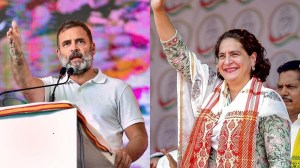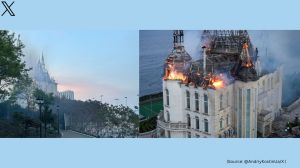- India
- International
Documentary Frida out: Five things you should know about Frida Kahlo, revolutionary artist and feminist
Frida Kahlo's intensely personal works drew from Mexican culture, folk art and her own struggles with love and health. They also represented her rejection of conservative values. Here's a brief account of her life and some of her famous paintings.
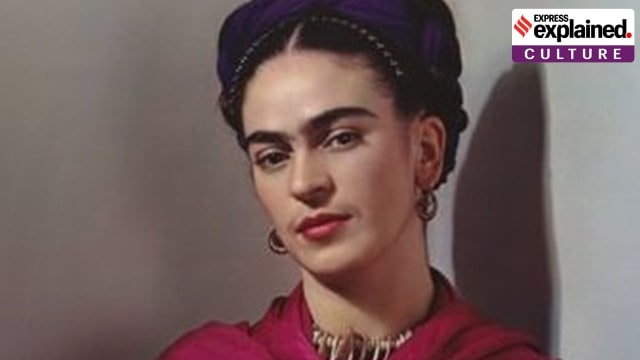 Frida Kahlo is one of the highest-selling women artists who also set a record for the most expensive Latin American work ever purchased at an auction. (Photo: https://www.fridakahlo.org)
Frida Kahlo is one of the highest-selling women artists who also set a record for the most expensive Latin American work ever purchased at an auction. (Photo: https://www.fridakahlo.org)Much has been written and said about Frida Kahlo, hailed as one of Mexico’s greatest artists. Now, in ‘the first attempt’ of its kind, a documentary puts together the enigmatic artist’s story in her own voice.
Frida, directed by Carla Gutiérrez, released on Prime Video on March 15.
It refers to Kahlo’s illustrated diaries, writings, archival photographs and video footage to chronicle her turbulent life that ended early, at 47, but left an indelible mark.
Kahlo’s intensely personal works drew from Mexican culture, folk art and her own struggles with love and health. They also addressed raging concerns and represented her rejection of conservative values.
Here are five things to know about the iconoclastic artist and her art.

Frida Kahlo had a troubled childhood
Born to a German father of Hungarian descent and a Mexican mother of Spanish and Native American descent in 1907, Kahlo spent most of her childhood at La Casa Azul, her family home in Coyoacán in Mexico City, witnessing the struggles and pain brought by the Mexican Revolution.
Suffering from spina bifida since birth, she also contracted polio at the age of six, leaving her bedridden for more than nine months and resulting in a deformity in her right leg. It is said that it was to cover her leg that she began wearing the long skirts in the traditional Mexican style that later became her trademark, appearing in several of her self-portraits.
A rebel, she was expelled from a German school for disobedience, and later enrolled in a vocational school, which she left after being sexually abused by a teacher. It was her father, artist and photographer Guillermo Kahlo, who acquainted her with literature, art and philosophy, also ensuring that she was socially and politically conscious.
Though she showed artistic prowess even during her formative years — when she received guidance from her father’s friend, printmaker Fernando Fernandez — she wanted to become a doctor, and enrolled at the Escuela Nacional Preparatoria in Mexico City to pursue medicine.
How did Frida Kahlo start painting the self?
According to the Frida Kahlo Foundation, the Mexican artist made 143 paintings, out of which 55 are self-portraits. The answer to when she began painting the self lies in the circumstances in which she gave up her dream of becoming a doctor and took up art.
In September 1925, Kahlo was in a near-fatal bus accident. Suffering from multiple fractures, including a crushed pelvis, she underwent numerous surgeries and was bedridden for months, At this time, art became her means of expression. She reportedly wrote: “I am not dead and I have a reason to live. That reason is painting.”
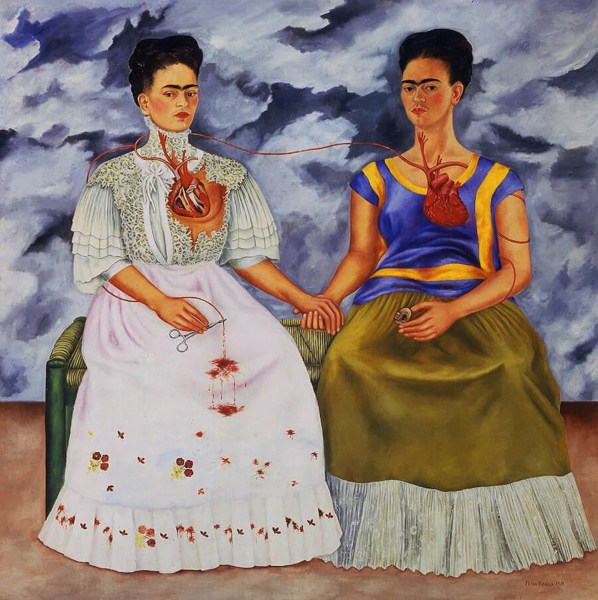 In The Two Fridas (1939) painted after her divorce, Kahlo depicts her conflicting identities, her Mexican roots and modern sensibilities. (Photo: http://www.fridakahlo.org)
In The Two Fridas (1939) painted after her divorce, Kahlo depicts her conflicting identities, her Mexican roots and modern sensibilities. (Photo: http://www.fridakahlo.org)
A special easel and a canopy bed with a mirror on the ceiling was designed for her. It is here that she began experimenting with small-scale portraits of the self, family and friends. A gift to her then boyfriend Alejandro Gómez Arias, one of her earliest professional self-portraits, Self Portrait in a Velvet Dress, was painted as early as 1926.
She had a turbulent romantic life
Kahlo was personally introduced to Diego Rivera as a fellow member of the Mexican Communist Party in 1928. A highly-influential member of the party, Rivera was also an artist of much repute. Though he was 20 years older to Kahlo and had been married twice before, the couple bonded over politics and art and decided to marry in 1929.
While Kahlo’s father was supportive, her mother famously described the couple as “the elephant and the dove”.
The relationship was turbulent. Years later, Kahlo is reported to have said: “I suffered two serious accidents in my life, one in which a streetcar knocked me down. The other accident was Diego.”
The couple cheated on each other several times, but when Rivera had an extramarital relationship with her sister, Kahlo saw it as betrayal and left their marital home. She also had a brief affair with communist leader Leon Trotsky. Rivera and Kahlo divorced in 1938, only to remarry in 1940 and staying together till Kahlo died in 1954.
How she painted her biography
Kahlo’s artworks largely depicted her state of mind. Often described as a surrealist, the artist herself stated: “They thought I was a surrealist, but I wasn’t. I never painted dreams. I painted my own reality.”
Deeply influenced by Mexican culture, her colour palette was bright, and she often turned to symbolism — from trees representing hope to monkeys, which in Mexican mythology represents lust. The pain she suffered through her life remained a constant theme in her depictions.
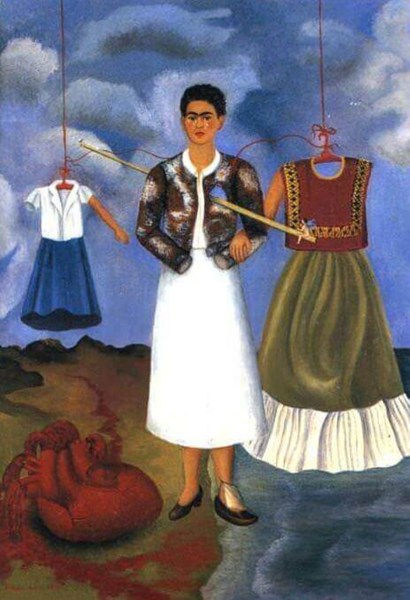 Memory, the Heart (1937) depicts Kahlo’s pain over her husband’s affair with her younger sister. (Photo: fridakahlo.org)
Memory, the Heart (1937) depicts Kahlo’s pain over her husband’s affair with her younger sister. (Photo: fridakahlo.org)
So if the painting Memory, the Heart (1937) depicts her pain over her husband’s affair with her younger sister, with a large broken heart at her feet, in The Two Fridas (1939) painted after her divorce, she depicts her conflicting identities, her Mexican roots and modern sensibilities. The Broken Column (1944) reveals her body bruised by innumerable surgical operations, and in Henry Ford Hospital (1932) she depicts the miscarriage she suffered.
She also had several animals as pets — including monkeys, macaws, parakeets and parrots — whom she also treated as the children she could not bear due to health complications. Several of them also appeared on her canvases.
Her political ideology also reflected in her works, as is evident from canvases such as Self-Portrait with Stalin (1954) and Marxism will restore Health to the Sick (1954).
She received limited success in Mexico during her lifetime
Overshadowed by her more successful husband, Kahlo had her first solo at Julien Levy Gallery in New York in 1938. In the following years, she exhibited across the world. In 1939, when the Louvre Museum acquired her painting The Frame, it was recognised as the first work by a 20th-century Mexican artist to be purchased by a major international museum.
However, her first major exhibition in Mexico only took place in 1953, a year before her death. Advised by her doctors to not attend the opening at Galeria Arte Contemporaneo due to her failing health, she decided to be there on her four poster bed, transported in the ambulance.
Kahlo is now celebrated as a revolutionary, feminist, and artist of immense talent who challenged existing norms. Associated with primitivism, magic realism and surrealism, she is one of the highest-selling women artists who also set a record for the most expensive Latin American work ever purchased at an auction, when her 1949 self-portrait Diego sold for $34.9 million at Sotheby’s in 2021.
More Explained
EXPRESS OPINION
May 01: Latest News
- 01
- 02
- 03
- 04
- 05











